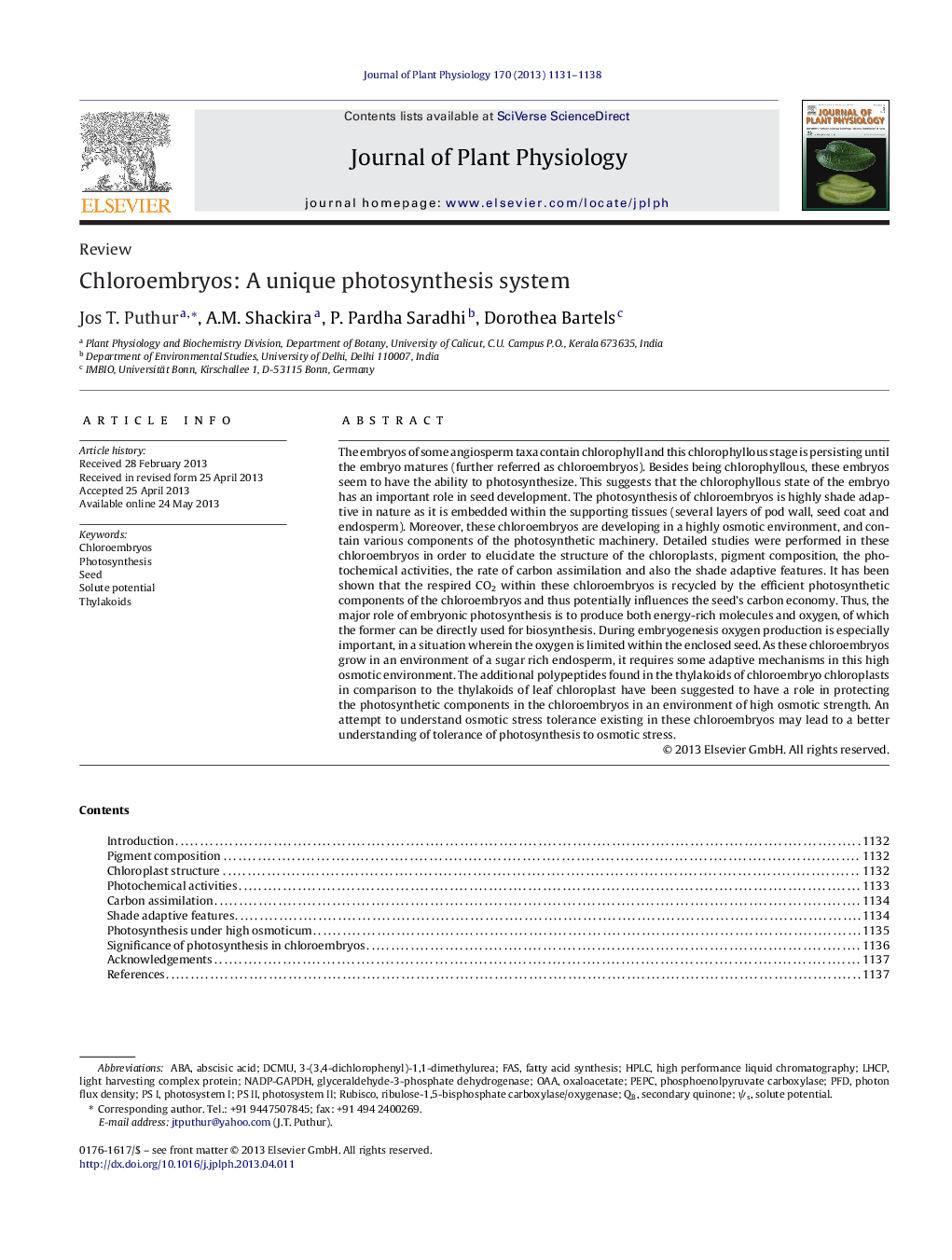| کد مقاله | کد نشریه | سال انتشار | مقاله انگلیسی | نسخه تمام متن |
|---|---|---|---|---|
| 2055986 | 1075794 | 2013 | 8 صفحه PDF | دانلود رایگان |

The embryos of some angiosperm taxa contain chlorophyll and this chlorophyllous stage is persisting until the embryo matures (further referred as chloroembryos). Besides being chlorophyllous, these embryos seem to have the ability to photosynthesize. This suggests that the chlorophyllous state of the embryo has an important role in seed development. The photosynthesis of chloroembryos is highly shade adaptive in nature as it is embedded within the supporting tissues (several layers of pod wall, seed coat and endosperm). Moreover, these chloroembryos are developing in a highly osmotic environment, and contain various components of the photosynthetic machinery. Detailed studies were performed in these chloroembryos in order to elucidate the structure of the chloroplasts, pigment composition, the photochemical activities, the rate of carbon assimilation and also the shade adaptive features. It has been shown that the respired CO2 within these chloroembryos is recycled by the efficient photosynthetic components of the chloroembryos and thus potentially influences the seed's carbon economy. Thus, the major role of embryonic photosynthesis is to produce both energy-rich molecules and oxygen, of which the former can be directly used for biosynthesis. During embryogenesis oxygen production is especially important, in a situation wherein the oxygen is limited within the enclosed seed. As these chloroembryos grow in an environment of a sugar rich endosperm, it requires some adaptive mechanisms in this high osmotic environment. The additional polypeptides found in the thylakoids of chloroembryo chloroplasts in comparison to the thylakoids of leaf chloroplast have been suggested to have a role in protecting the photosynthetic components in the chloroembryos in an environment of high osmotic strength. An attempt to understand osmotic stress tolerance existing in these chloroembryos may lead to a better understanding of tolerance of photosynthesis to osmotic stress.
Journal: Journal of Plant Physiology - Volume 170, Issue 13, 1 September 2013, Pages 1131–1138